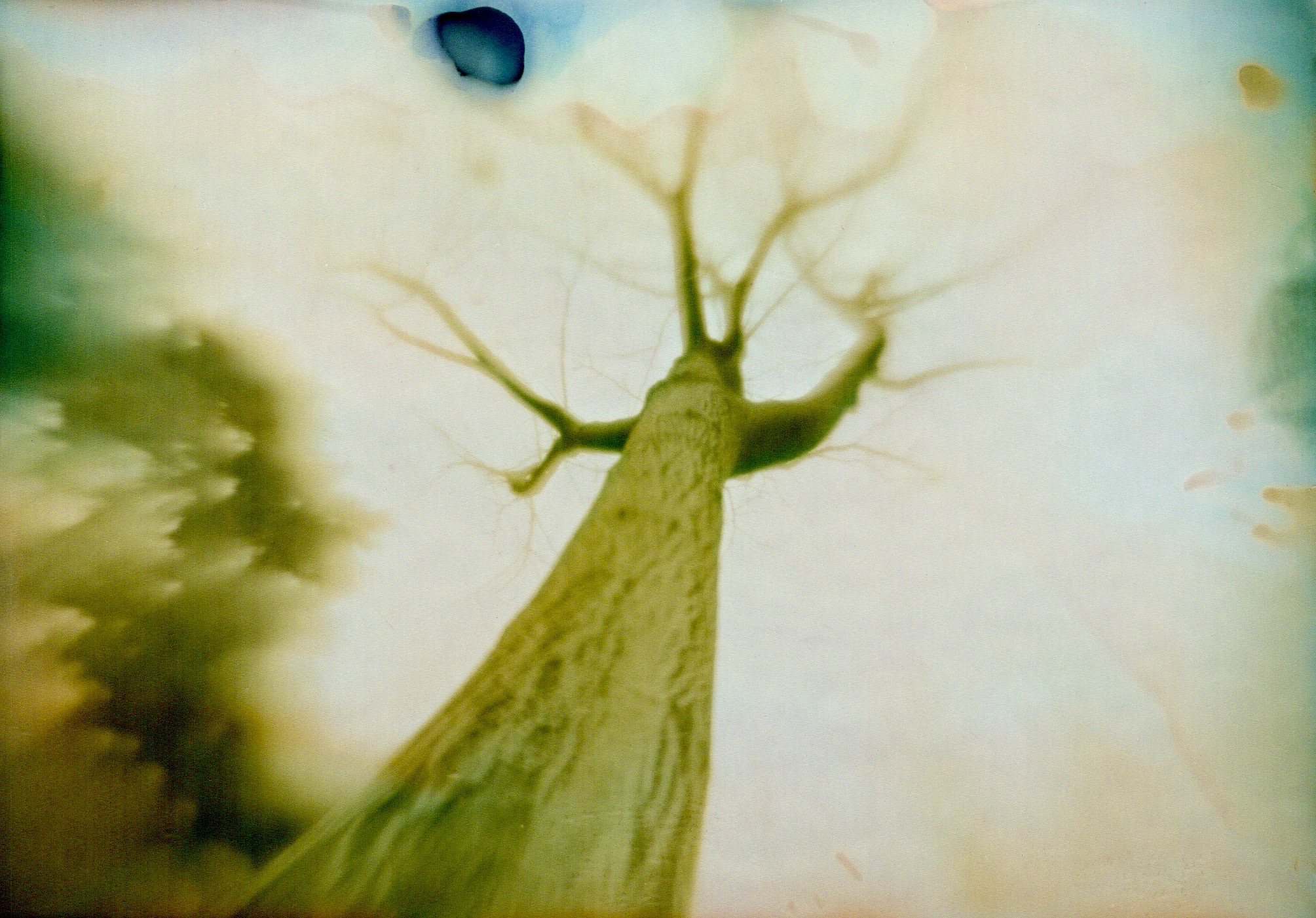Winter Light

I was inspired this morning to take the little paper Lumenbox camera outside today and try my hand at another exposure. The camera had been sitting on the lid of my scanner for several weeks, quietly eyeing my activity at the cluttered desk, waiting for its time in the sun (literally). Not that it's actually conscious, but sometimes we just have to pretend. It's part of the process, anthropomorphizing our creative tools like they are more than mere helpmates.
Once again I used a piece of photo paper that came supplied with the camera by Jorge Otero, but this time I pre-wetted the paper with warm water. Wetting the emulsion speeds up the exposure somewhat, while also causing slightly different colors.
To limit the paper's exposure to the cold until I was ready to begin the exposure, I first went outside and hunted around for a suitable composition. Wintertime can be difficult, with it's barren tree branches and sparse vegetation. Well, technically it's not yet winter, but close enough. I ended up setting the Ultrapod at the base of a backyard tree, with the wooden camera platform pointed almost directly up the side of the tree trunk. Then I went inside, wetted the paper and loaded the camera, then quickly got it set up on the tripod and began the exposure. I set the dive timer dial on my Casio watch and went to work editing today's video, forgetting about the Lumenbox until an hour and 20 minutes had passed.
I was surprised at the contrast and density of the resulting image, which pleased me. There was a bit of a dark gray stain on the reverse side of the paper, from the wetted paper affecting the black craft paper liner's dye inside the camera. I brought it inside, quickly dried the remaining few spots of water off the paper (it would have been entirely dry if this had been a summer exposure), then sequestered the negative in a black paper storage sleeve until I could scan it.
I like to minimize the amount of light these negatives receive after their in-camera exposure. I warmed the scanner up and did a pre-scan, before bringing the negative out of its storage sleeve and doing the scan. Being as I currently lack a real photo editor like Photoshop, I invert the tones on the Mac Mini using the preview mode (reversing the left and right controls of the levels tool), then imported the image into the Photos app for final processing, which required a bit of contrast and levels adjustment. The colors also reverse with the tones, resulting in this green-tinted image.
One of the things that really surprises me about this process is the final color pallet. Even comparing images made mere hours apart, the results can vary considerably. This is the first time I've had this greenish tone, which contrasts nicely with the delicate salmon tones to the sky, and the cyans near the edge. The dark spot near the top edge is probably the result of the residual water having ran down into one spot near the bottom of the negative (in-camera images being reversed vertically).
This is a very satisfying result, and one that makes the process so enjoyable, the anticipation of what might happen, but not knowing exactly what. I'm also pleased knowing that it's very hard to over-expose these images, because as the image slowly forms on the paper within the camera the darker image areas self-mask.
I used the lens with its aperture wide-open, resulting in those wonderful out-of-focus areas along the left edge, a result of the intrinsic optical properties of the single-element meniscus lens.
During these cold months my garage-based darkroom requires concentrated planning to use effectively for chemical processing of film or paper, as the space has to be heated and the chemicals microwaved to room temperature. Therefore these impromptu self-forming lumen prints are a wonderful diversion from winter's chill.
Labels: Lumenbox

2 Comments:
That is an eerie image, very interesting.
Wow, that's a really fantastic exposure, and great colors! :D
Post a Comment
<< Home